As an avid aquarium hobbyist, I have found that nothing compares to the beauty and complexity of a saltwater aquarium. Marine aquariums offer a unique challenge to experienced hobbyists, but the rewards of creating a thriving underwater paradise in your own home are well worth the effort.
In this section, we will explore the exciting world of marine aquariums and the unique challenges they present. We’ll dive into the fascinating realm of saltwater aquariums and discover how to create a harmonious and balanced ecosystem filled with vibrant colors and diverse marine life.
Table of Contents
Key Takeaways:
- Marine aquariums offer a rewarding challenge for experienced hobbyists
- Saltwater aquariums require specific knowledge and equipment to create a thriving environment
- Creating a balanced ecosystem is essential for the health and well-being of marine life
- The visual appearance of the aquarium is just as important as its inhabitants
- With dedication and patience, anyone can create a stunning saltwater aquarium in their own home
Getting Started with Marine Aquariums
As a beginner in the world of marine aquariums, it’s important to understand the basics to ensure a healthy and thriving aquarium for your fish and other aquatic organisms.
The first step is selecting the right aquarium fish. Some popular options for saltwater aquariums include clownfish, tangs, and gobies. It’s important to research different species and their compatibility with each other to avoid any conflicts.
Next, you’ll need to set up your saltwater aquarium. This involves selecting the appropriate tank size, filtration system, and other essential aquarium equipment. An important consideration is ensuring proper water chemistry to maintain a healthy environment for your fish and other marine life.
A helpful tip is to start with a smaller aquarium and gradually build up to a larger tank as you gain more experience.
“The key to a successful saltwater aquarium is patience and attention to detail.”
With the right knowledge and equipment, creating a beautiful and thriving marine aquarium can be a rewarding experience. Stay tuned for more tips on how to maintain your saltwater aquarium in later sections.
The Importance of Proper Equipment
As an experienced aquarium enthusiast, I’ve learned that having the right equipment is crucial for maintaining a healthy and successful marine aquarium. Without the proper tools, your fish and coral may suffer from inadequate living conditions, leading to illness or even death.
The Key Equipment You’ll Need
First, let’s discuss the essential equipment you’ll need for your marine aquarium:
| Equipment | Function |
|---|---|
| Aquarium Tank | Provides a home for your marine life while also being the main feature of the aquarium |
| Skimmer | Helps remove unwanted organic compounds from the water, ensuring proper water movement and oxygenation |
| Heater | Keeps the water temperature consistent for the well-being of your fish and coral |
| Aquarium Pump | Creates water flow and oxygen exchange in your aquarium while also serving as the heart of the filtration system |
| Lighting System | Provides the necessary light for the photosynthesis of your coral and marine plants and helps regulate the growth and behavior of your fish |
| Test Kit | Monitors the water chemistry of your aquarium, allowing you to adjust the conditions to best suit your marine life |
In addition to the equipment listed above, you may also need additional tools and accessories such as protein skimmers, wavemakers, dosing pumps, and more, depending on the size and complexity of your marine aquarium setup.
Designing Your Marine Aquarium Setup
When designing your marine aquarium, it’s important to consider the following:
- The size of your aquarium
- The species and number of marine life you will keep
- The placement and functionality of equipment
- The type and amount of substrate and live rock
These factors will affect the layout, water flow, and overall functionality of your marine aquarium. By carefully planning and designing your setup with the proper equipment, you can create a healthy and thriving environment for your marine life.
Remember, investing in high-quality equipment for your marine aquarium from trusted brands such as AquaIllumination, Fluval, and Eheim can make a significant difference in the health and longevity of your aquatic ecosystem.
Maintaining Water Quality and Filtration
When it comes to keeping your marine aquarium thriving and healthy, maintaining water quality is key. Along with regular aquarium maintenance, proper aquarium filtration is crucial for achieving optimal water conditions.
There are several types of filtration systems available, including mechanical, chemical, and biological. Mechanical filtration removes debris and particles from the water, while chemical filtration uses media to absorb impurities and odors. Biological filtration introduces beneficial bacteria that break down harmful compounds in the water.
| Filtration Type | Function | Advantages |
|---|---|---|
| Mechanical Filtration | Removes debris and particles from the water | Improves water clarity and quality, reducing stress on fish and coral |
| Chemical Filtration | Uses media to absorb impurities and odors from the water | Helps maintain healthy water chemistry and reduces the risk of disease outbreaks |
| Biological Filtration | Introduces beneficial bacteria that break down harmful compounds in the water | Helps maintain healthy water conditions and supports the growth of beneficial organisms in the tank |
Regularly testing your water parameters is also important for ensuring that your filtration system is working effectively. Monitor ammonia, nitrite, nitrate, and pH levels to maintain a stable and healthy environment for your fish and coral.
Proper filtration and water maintenance are essential for the long-term success of your marine aquarium. Keep your fish and coral healthy and happy with regular care and attention.
Understanding Lighting Needs for Marine Aquariums
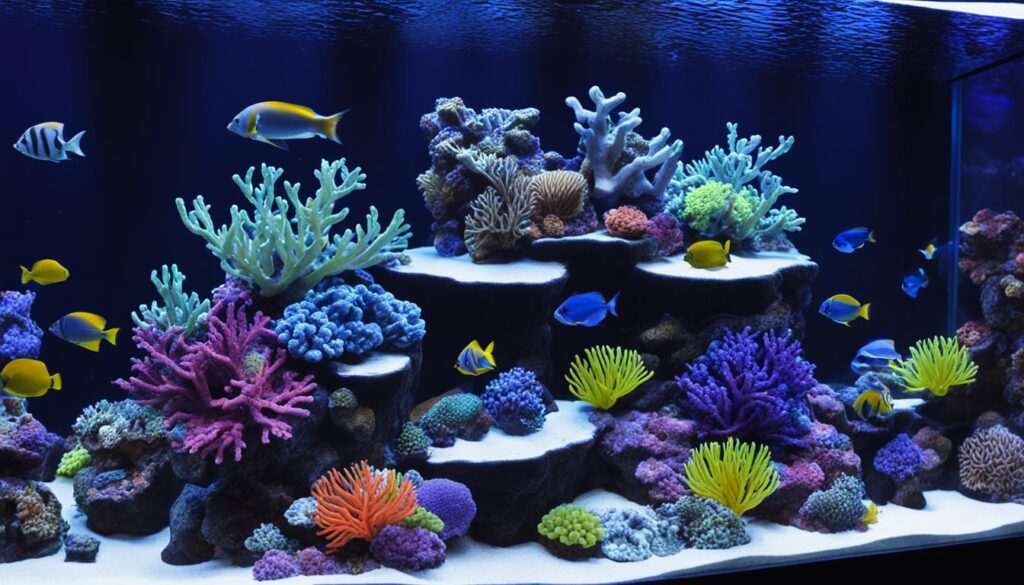
Proper aquarium lighting is essential for the health and growth of your marine organisms. Different types of aquarium lighting options are available for marine aquariums, depending on the needs of the specific species.
Reef tank enthusiasts, in particular, need to keep a close eye on their lighting conditions. Corals require high-intensity lighting to thrive, while fish have varying needs depending on their natural habitat.
Types of Aquarium Lighting
| Type of Lighting | Advantages | Disadvantages |
|---|---|---|
| Fluorescent Lighting | Energy-efficient, good for growing plants and algae | May require frequent replacement of bulbs, may not be intense enough for certain corals |
| LED Lighting | Energy-efficient, customizable color spectrum, long lifespan | High upfront cost, may not be intense enough for certain corals |
| Metal Halide Lighting | Intense light, good for growing larger corals | High heat output, high electricity usage, expensive bulbs |
When choosing lighting for your aquarium, consider the needs of your specific marine life. It’s best to consult with a professional or experienced hobbyist to determine the most appropriate lighting options. Don’t forget to also consider the color temperature and intensity of the light, as well as the duration of lighting periods.
Providing the appropriate lighting conditions for your reef tank can be a challenging task, but the results are well worth it. A beautiful and thriving underwater world awaits you and your marine life.
Choosing the Right Aquarium Fish and Invertebrates
Creating a harmonious and balanced ecosystem in your marine aquarium requires careful consideration when selecting fish and invertebrates. Before making your choice, it is important to research the specific needs and behaviors of the species you are interested in to ensure they are compatible with your aquarium’s environment. Some factors to consider when choosing aquarium fish and invertebrates for your saltwater aquarium include their level of aggression, dietary requirements, and compatibility with other species.
Popular fish species for saltwater aquariums include clownfish, tangs, and gobies, while invertebrates such as shrimp, crabs, and starfish can add a touch of diversity to your ecosystem. It is essential to avoid overstocking your aquarium and to ensure you have ample space for each species to thrive.
Factors to Consider When Choosing Aquarium Fish and Invertebrates:
| Factor | Description |
|---|---|
| Level of Aggression | Some species may be more territorial or aggressive towards others. |
| Dietary Requirements | Consider the specific diet needs of each species and ensure you can provide it. |
| Size | Take into account the maximum size each species can grow to and provide adequate space. |
| Compatibility | Ensure the species you choose are compatible with each other and your aquarium’s environment. |
Overall, selecting the right aquarium fish and invertebrates for your saltwater aquarium is crucial for maintaining a thriving and visually appealing ecosystem. Take the time to research and carefully consider each species before making your choices.
Creating a Beautiful Aquascape
Designing a visually stunning marine aquarium with the right selection of aquarium supplies is an exciting part of the hobby. When carefully choosing the right rocks, coral, and other decor items, you can create an appealing aquascape that enhances both the aesthetics and the well-being of your fish and other marine life.
The key to achieving a beautiful aquascape is to understand the principles of marine aquarium design. Begin by selecting appropriate aquarium supplies that complement the size and shape of your tank. High-quality lighting systems, such as LEDs, will allow you to adjust the spectrum and intensity of the light, adding dimensionality to your design.
It’s important to consider the positioning of the aquarium supplies within the tank. Select rocks and other decor items that allow enough space for your fish and invertebrates to swim freely and explore their environment. Strategic placement of rocks and coral will create small caves and hiding places for your marine creatures to enjoy while adding depth and complexity to your aquarium design.
The colors of the rocks and decor you choose can contribute greatly to the overall aesthetic of your aquascape. Neutral colors, such as gray and black, can create a sleek and modern look, while brighter colors, like vivid reds and blues, can add a bold and vibrant pop of color. You can play around with these color combinations to create a design that is uniquely your own.
To help you visualize how to create a stunning aquascape with the right aquarium supplies, here is a table summarizing some examples of decor items and how they can be used in your design:
| Decor Item | Function | Example |
|---|---|---|
| Live Rock | Biological filtration and habitat for marine life | Fiji Live Rock |
| Aquarium Sand | Provide a natural substrate and help with biological filtration | Tahitian Moon Sand |
| Artificial Coral | Add color and texture to the aquascape | Fluval Sea Artificial Coral |
| Live Coral | Add color, texture, and natural filtration to the tank | Nassarius Snail |
By following these principles and selecting the right aquarium supplies, you can create a beautiful and functional marine aquarium that enhances the health and happiness of your fish and other marine life.
Nurturing Coral and Reef Life
Building a thriving reef tank in your saltwater aquarium requires careful attention to water chemistry and creating a delicate balance that supports coral growth. Many factors come into play, including lighting, water flow, and nutrient management.
First, it’s crucial to select the right coral for your reef tank. There are many beautiful options to choose from, but not all coral species will thrive in your specific tank environment. Research the needs of each coral type to determine which are best suited for your setup.
Once you’ve selected your coral, it’s time to create the ideal conditions for growth. This may involve adjusting the lighting, water flow, and nutrient levels in your aquarium to suit the specific needs of your coral. Regular water testing and maintenance will be necessary to ensure that all parameters are kept in check.
Lighting Needs for Coral Growth
The type and intensity of lighting in your aquarium will play a significant role in the growth and health of your coral. Different coral types have varying lighting needs, so it’s crucial to research each species and adjust your lighting accordingly.
Investing in a high-quality lighting system specifically designed for reef tanks can make a significant difference in the growth and development of your coral. Look for options that provide a broad spectrum of light and adjustable intensity settings for optimal customization.
Water Flow and Nutrient Management
The water flow in your aquarium is another critical factor in creating a thriving reef tank ecosystem. Coral rely on water flow to bring nutrients and oxygen to their polyps, so it’s essential to ensure adequate circulation throughout your tank.
Managing nutrient levels in your aquarium is also crucial for the health of your coral. Overfeeding your fish or allowing excess waste to accumulate can lead to an imbalance in nutrient levels, which can stunt coral growth and lead to other problems in your tank.
Tip: Consider investing in a high-quality protein skimmer to help remove excess waste and maintain stable nutrient levels in your aquarium.
| Coral Type | Lighting Needs | Water Flow | Nutrient Needs |
|---|---|---|---|
| SPS Coral | High intensity | Strong, turbulent flow | Low nutrient levels, high calcium and alkality |
| LPS Coral | Moderate intensity | Gentle to moderate flow | Stable nutrient levels, high calcium and alkality |
| Soft Coral | Low to moderate intensity | Low to moderate flow | Stable nutrient levels, low calcium and alkality |
Proper care and maintenance are key to nurturing a thriving coral reef in your saltwater aquarium. By selecting the right coral and creating optimal lighting, water flow, and nutrient conditions, you can enjoy the vibrant colors and beauty of a healthy reef tank for years to come.
Dealing with Common Challenges and Solutions
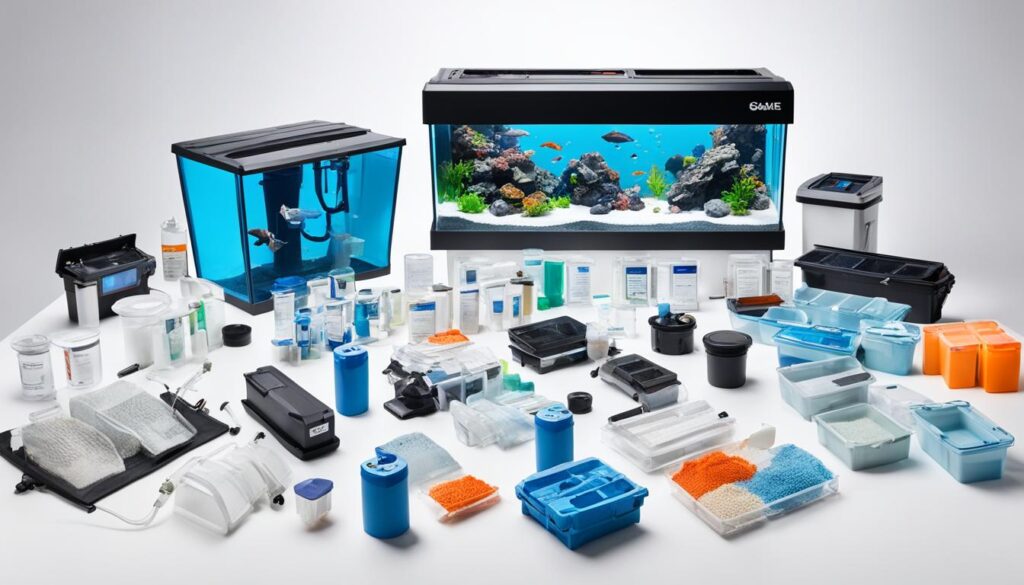
Marine aquariums require dedication and attention to maintain a healthy and thriving ecosystem. Here, we will discuss common challenges that arise and provide solutions for keeping your reef tank in top condition.
Algae Growth
Algae growth is a common problem in marine aquariums that can be caused by factors such as excess nutrients, inadequate lighting, or poor water circulation. To prevent algae growth, ensure you have the appropriate equipment such as a protein skimmer, regularly monitor water quality, and perform regular water changes. If algae growth persists, consider reducing the lighting time or adding algae-eating fish or invertebrates to your aquarium.
Temperature Fluctuations
Temperature fluctuations can have a significant impact on the health of your marine organisms. Keeping the temperature consistent is crucial for maintaining a healthy ecosystem. Invest in a reliable aquarium heater and thermometer, and ensure your aquarium is not placed in an area where it will be subjected to extreme temperature changes. Regularly monitor the water temperature and make adjustments as necessary.
Water Chemistry Imbalances
Water chemistry imbalances can be caused by factors such as overfeeding, insufficient water changes, or improper use of aquarium supplements. Regularly monitor the water chemistry levels in your reef tank and make adjustments as needed. Additionally, avoid overfeeding and be cautious when adding new substances to your aquarium. When in doubt, seek advice from a trusted aquarium professional.
Equipment Malfunctions
Malfunctioning equipment, such as pumps or filters, can be a serious threat to the health of your marine organisms. Regularly inspect and maintain your aquarium equipment to detect and prevent any potential issues. Keep spare equipment on hand in case of emergency, and be prepared to act quickly to fix any issues that arise.
By following these tips and remaining vigilant in your aquarium maintenance routine, you can stay ahead of common challenges and keep your reef tank thriving. Invest in high-quality aquarium supplies and stay informed on best practices for maintaining a healthy marine ecosystem.
Exploring Advanced Techniques and Innovations
As a seasoned aquarium enthusiast, it’s always exciting to discover new ways to enhance the beauty and health of a marine aquarium. In this section, I’ll share some advanced techniques and innovative equipment that can truly take your aquarium design to the next level.
1. Protein Skimmers
One of the most important pieces of equipment for maintaining water quality is a protein skimmer. This device removes organic waste from the aquarium water before it has a chance to break down and harm your fish and coral. With advancements in technology, there are now highly efficient protein skimmers available that can effectively clean even large saltwater aquariums.
2. Refugiums
A refugium is a separate chamber in your aquarium that serves as a biological filter and can also provide a safe haven for fish and other marine life. This advanced technique involves cultivating a separate ecosystem within your aquarium, which can improve water quality and promote healthy aquarium conditions. Refugiums can be filled with live rocks, sand, and other natural materials to create a thriving ecosystem.
3. Automated Systems
For those with busy lifestyles or multiple aquariums to maintain, automated systems can be a game-changer. These advanced systems can regulate water temperature, lighting, and even feed your fish automatically. With the right setup, you can monitor and control your entire aquarium ecosystem remotely using your phone or computer.
4. Custom Aquarium Design
When it comes to creating a truly exceptional marine environment, custom aquarium design can make all the difference. By working with a professional aquarium designer, you can create a unique and stunning aquarium that perfectly complements your home or office. From custom-built aquariums to artistic rock formations and coral placement, the possibilities are endless.
By exploring these advanced techniques and innovations in aquarium design, you can create a truly exceptional marine environment that will be the envy of all your friends and family. Embrace the challenge and dive into the world of advanced marine aquariums today!
Conclusion
In conclusion, I hope this article has provided valuable insights into the exciting world of marine aquariums. Saltwater aquariums can be a challenging endeavor, but the rewards are well worth the effort. With the right equipment, dedication, and know-how, you can create a thriving underwater paradise in your own home.
Remember, maintaining a healthy and balanced marine environment requires proper care and attention to detail. Regular water testing, filtration, and lighting adjustments are crucial for the well-being of your fish and coral.
Be sure to research and select the appropriate aquarium supplies and marine life for your setup, taking into account factors such as compatibility, size, and temperament.
By investing time and effort into your marine aquarium, you can enjoy the beauty and wonder of a saltwater ecosystem right in your own home. So why not take the plunge and explore the world of marine aquariums today?
Thank you for joining me on this journey through the fascinating world of marine aquariums. I hope you found this article informative and inspiring. Happy aquarium keeping!
FAQ
What is a marine aquarium?
A marine aquarium is a tank that is specifically designed and set up to replicate the conditions found in the ocean, housing marine fish, corals, and other saltwater organisms.
What is the difference between a marine aquarium and a freshwater aquarium?
The main difference is the type of water and organisms they house. Marine aquariums contain saltwater and are home to marine fish and invertebrates, while freshwater aquariums use freshwater and typically house freshwater fish and plants.
What types of fish can I keep in a marine aquarium?
There is a wide variety of fish that can thrive in a marine aquarium, including popular species like clownfish, angelfish, and tangs. However, it’s important to research the specific needs and compatibility of each species before adding them to your aquarium.
How do I set up a saltwater aquarium?
Setting up a saltwater aquarium involves several important steps, including selecting the right tank size, choosing appropriate equipment such as a protein skimmer and powerheads, and cycling the tank to establish a healthy biological filter.
How often should I perform maintenance on my marine aquarium?
Regular maintenance is crucial for the health of your marine aquarium. It typically includes water testing, water changes, cleaning the tank and equipment, and monitoring parameters such as temperature and salinity. The frequency of maintenance tasks can vary depending on the specific needs of your aquarium.
What type of lighting is best for a reef tank?
Reef tanks require a specific type of lighting that provides the appropriate spectrum and intensity for photosynthetic organisms, such as corals and algae. LED lights and T5 fluorescent lights are commonly used for reef tanks to ensure optimal growth and coloration.
Can I add coral to my marine aquarium?
Yes, you can add a wide variety of corals to your marine aquarium, including soft corals, LPS corals, and SPS corals. Each type of coral has specific care requirements, so it’s important to research and provide the necessary conditions for their growth and health.
How can I troubleshoot common issues in my marine aquarium?
Common issues in marine aquariums can include fluctuations in water parameters, algae outbreaks, and fish or coral diseases. It’s important to test water regularly, maintain proper filtration, and quarantine new additions to prevent and address any problems that arise.
Are there any innovative technologies or techniques for marine aquariums?
Yes, there are constantly advancements in aquarium technology and design. Some innovations include automated dosing systems, controllable LED lighting, and more efficient filtration systems. These advancements can help enhance the health and beauty of your marine aquarium.
References
Please check out the below articles like:
Master Breeding Techniques for Angelfish – A Guide for Hobbyists
Mastering Dwarf Puffer Fish Care: A Friendly Guide
Male or Female Betta? How to Tell – Your Ultimate Guide
Complete Guide to Plecostomus Tank Size: Tips and Advice
Simple Guide to Easy-to-Care-for Aquarium Plants
Discover the Diverse Corydoras Catfish Varieties- A Guide
Get to Know Various Types of Algae Eaters
Master Guide: Best Water Parameters for Goldfish Care 2023-24
Mastering Black Ghost Knife Fish Care: A Comprehensive Guide
Optimal pH Levels for Tropical Fish: Essential Aquarium Guide
Discovering Freshwater Snail Species: An In-depth Guide
Expert Tips for Breeding Guppies: Keys to Successful Fishkeeping
Discover Peaceful Community Fish: Your Guide to Calm Aquatics
Ultimate Guide to Live Food for Betta Fish — Healthy Choices
Complete Guide to Your Perfect Cichlid Tank Setup
Your Guide to the Best Substrate for Planted Aquariums
Essential Guide to Discus Fish Care: Help Your Pets Thrive!
Grow Your Own Eden: Beginner-Friendly Aquascaping Plants Guide
Perfect Neon Tetra Tank Mates: Guide to Aquarium Harmony
Product Review of Eheim Classic vs Professional
The Ultimate Guide to Discus Fish Care
What Fish Can Live With Discus?
Ideal pH for Discus Fish | Aquarium Water Guide
How to Sex Discus Fish?: A Simple Guide for Hobbyists
Complete Discus Fish Tank Setup Guide
Can Discus Fish Live With Angelfish? The Complete Guide
Discus Diet Guide: What Do Discus Fish Eat?
Are Discus Fish Hard to Keep? Insights & Tips.
Optimal Discus Fish Water Parameters Guide
Discus Fish Size Guide 2024: How Big Do Discus Fish Get?
Ultimate Million Fish Guppy Care Guide 2024
Simple Guide to Easy-to-Care-for Aquarium Plants
Grow Your Own Eden: Beginner-Friendly Aquascaping Plants Guide
Hornwort Aquarium Plants: The Ultimate Guide to Care and Maintenance
Aquarium Equipment for Beginners: The Complete Checklist
Feeding Your Aquarium Fish: The Complete Guide
Common Beginner Fishkeeping Mistakes and How to Avoid Them!
Aquarium Plants for Beginners: Easy Care and Beautiful Options
Keeping Your Aquarium Water Clean and Healthy: The Complete Guide
Breeding Aquarium Fish: A Comprehensive Guide
I am a passionate aquarist with over 30 years of hands-on experience in fishkeeping. My journey began at a young age, collecting fish from the wild and learning through experimentation. Specializing in tropical fish, I bring a deep understanding of the hobby to FishKeepingMadeSimple. The site provides honest, detailed reviews of essential products and accessories to help fellow enthusiasts create the best environments for their fish.

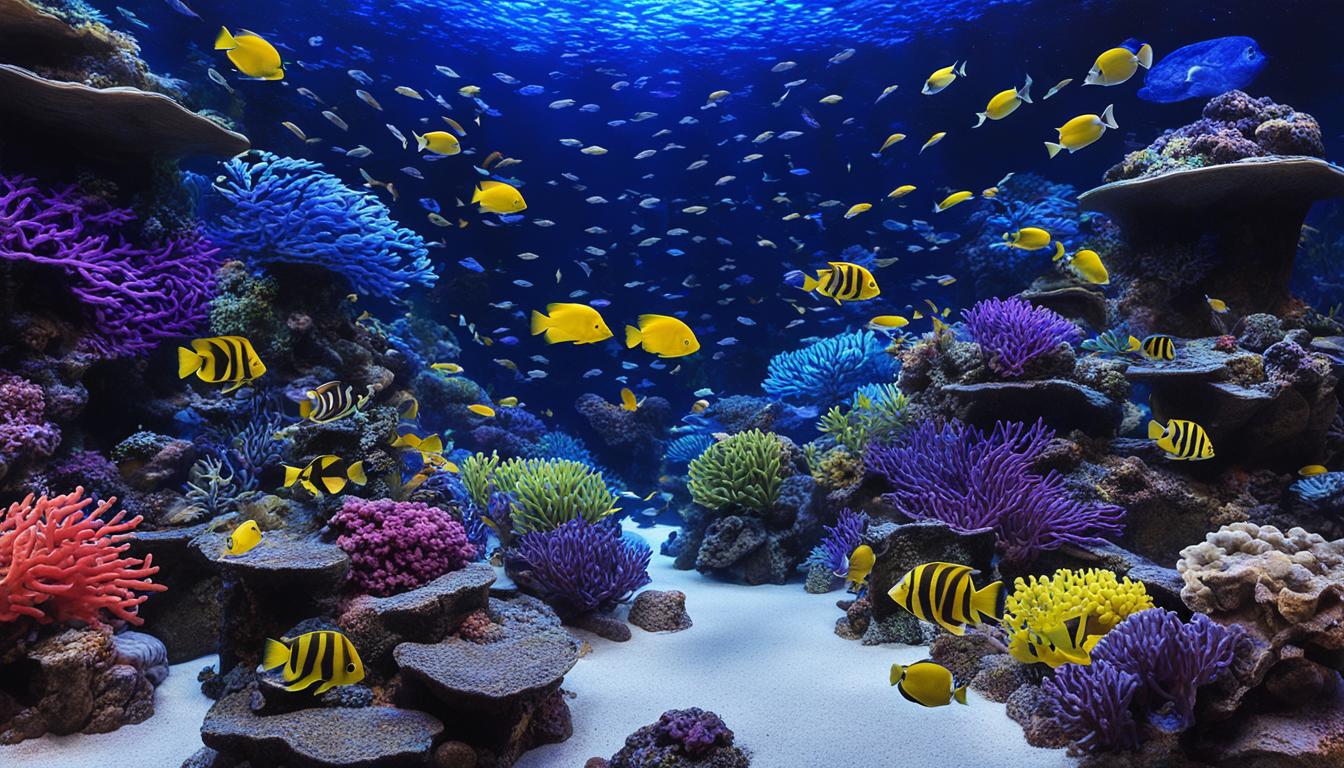
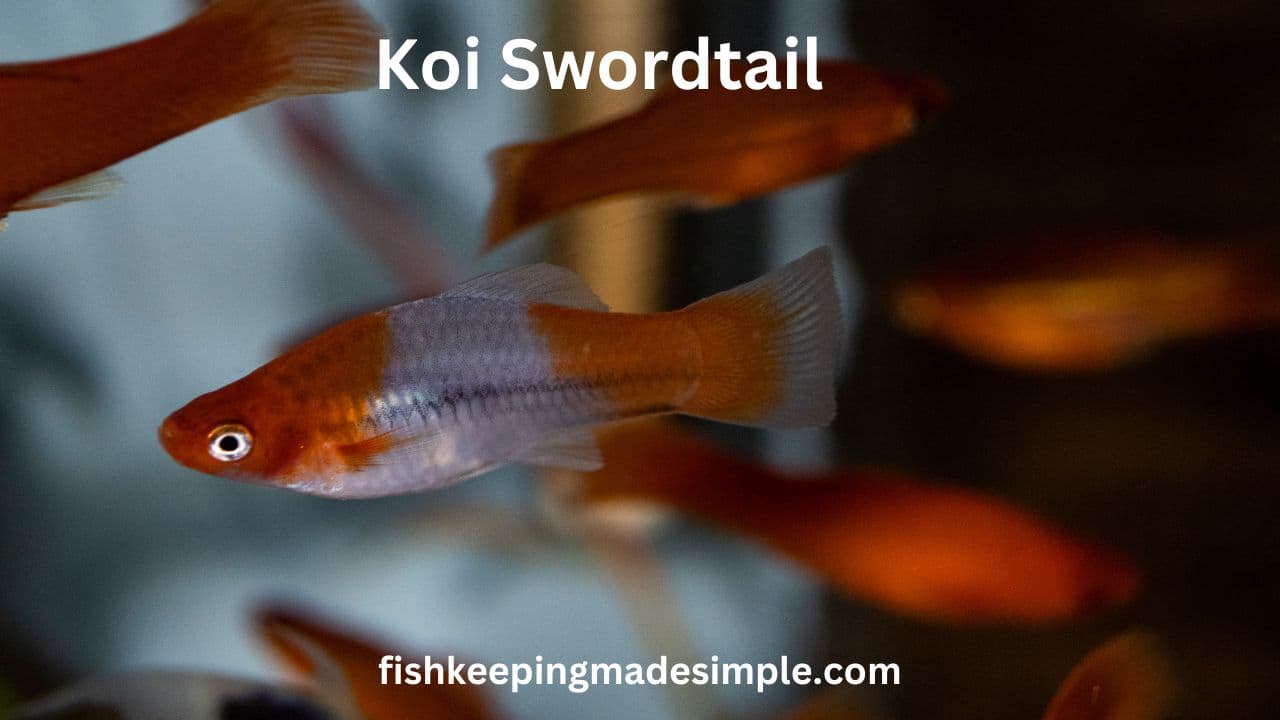

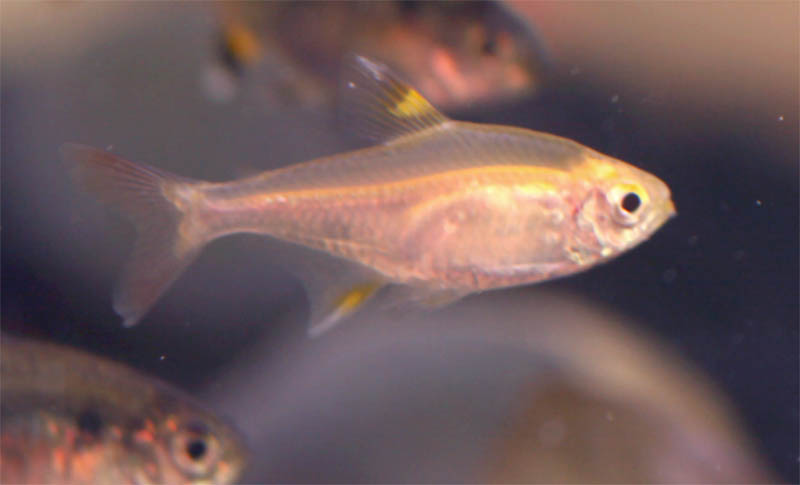
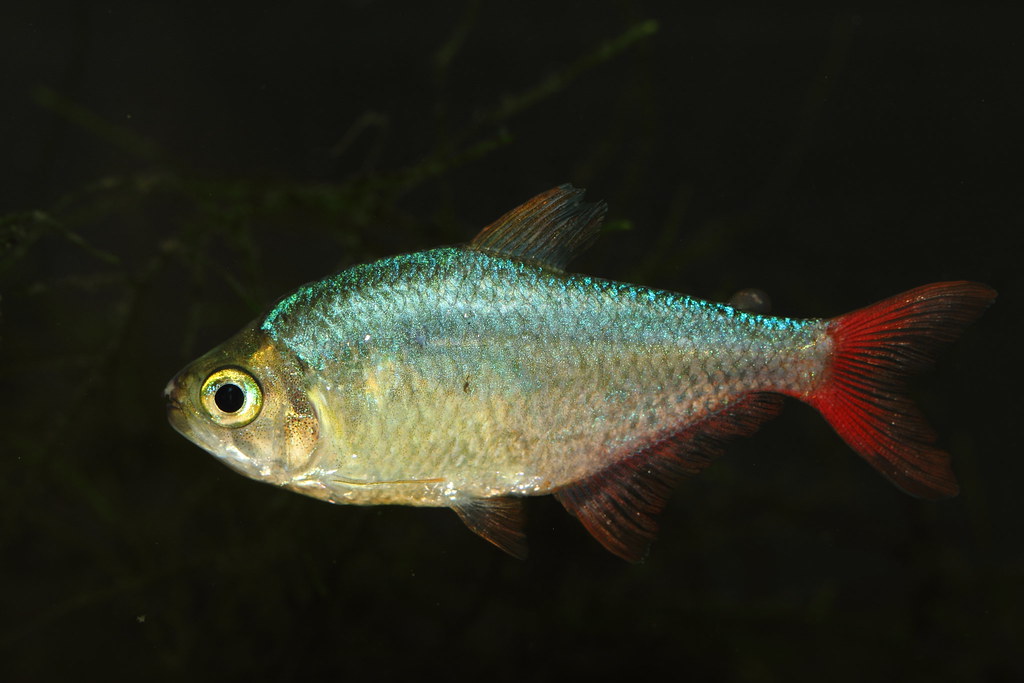
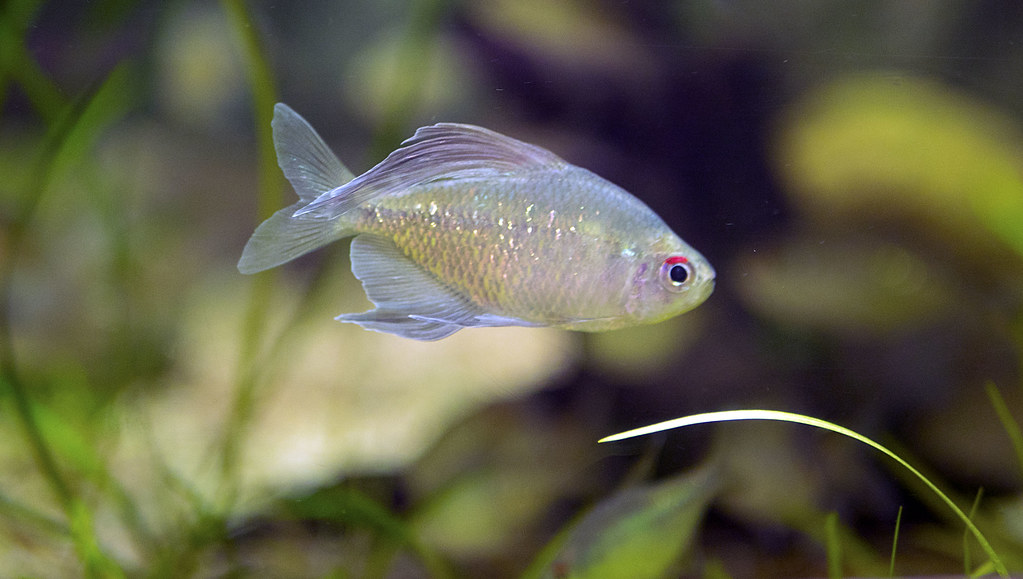
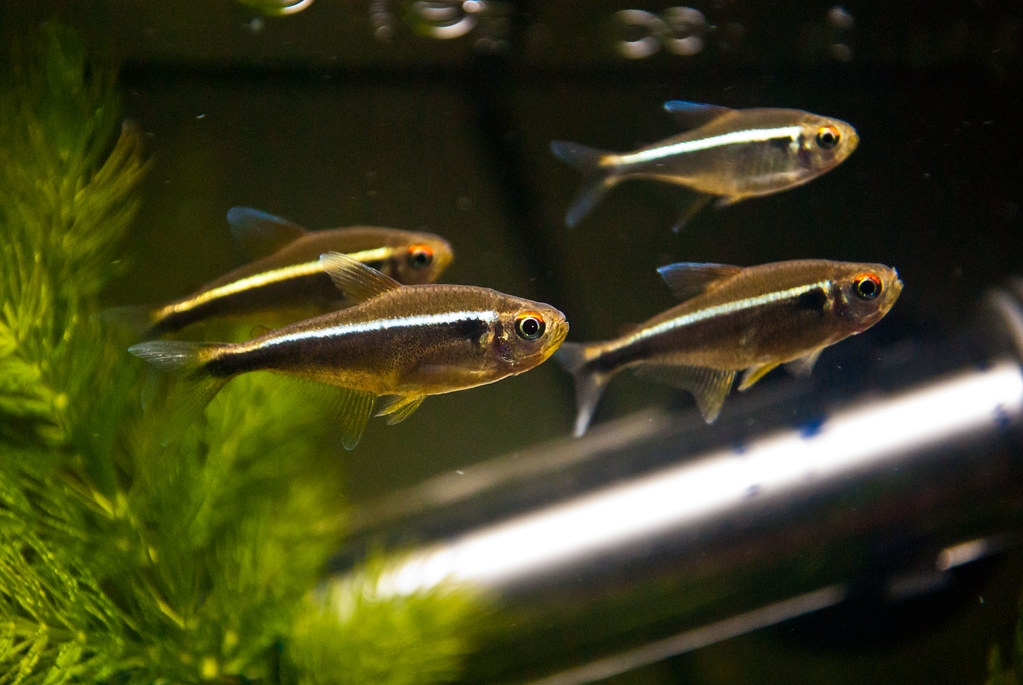
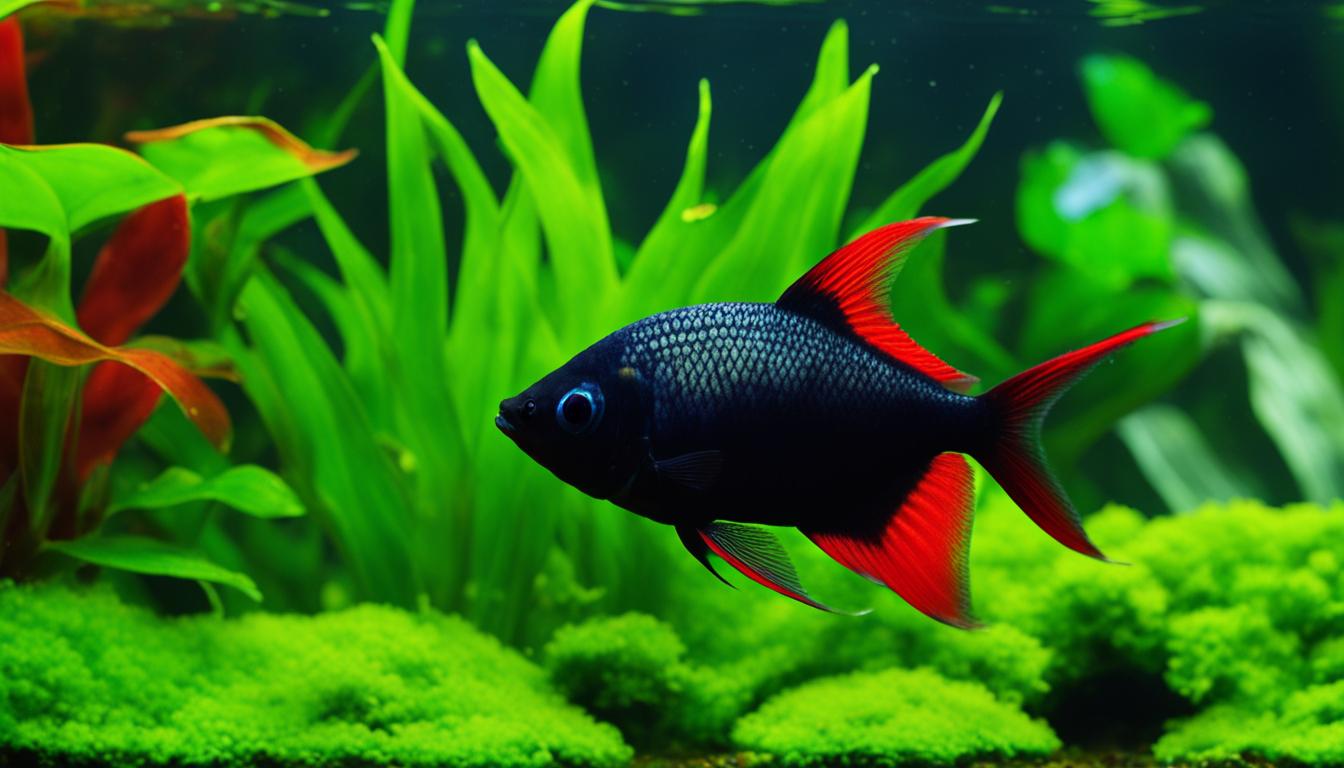

[…] Marine Aquariums: The Ultimate Challenge for Experienced Hobbyists […]
[…] Marine Aquariums: The Ultimate Challenge for Experienced Hobbyists […]
[…] Marine Aquariums: The Ultimate Challenge for Experienced Hobbyists […]
[…] Marine Aquariums: The Ultimate Challenge for Experienced Hobbyists […]
[…] addition to providing a window to the underwater world, aquariums also contribute to the conservation of marine life through breeding programs and habitat restoration […]
[…] a distinct coloration of red or orange with white stripes, making them an excellent addition to any marine aquarium. It’s important to keep in mind that lionfish species require specific care and attention, […]
[…] Marine Aquariums: The Ultimate Challenge for Experienced Hobbyists […]
[…] Marine Aquariums: The Ultimate Challenge for Experienced Hobbyists […]
[…] a comprehensive guide to caring for these beautiful fish. Whether you’re a beginner or an experienced hobbyist, this article will help you create a suitable environment for your red […]
[…] for anyone passionate about these freshwater aquarium fish. Whether you’re a beginner or an experienced hobbyist, you’ll discover everything you need to know about Arowana care, from habitat setup to […]